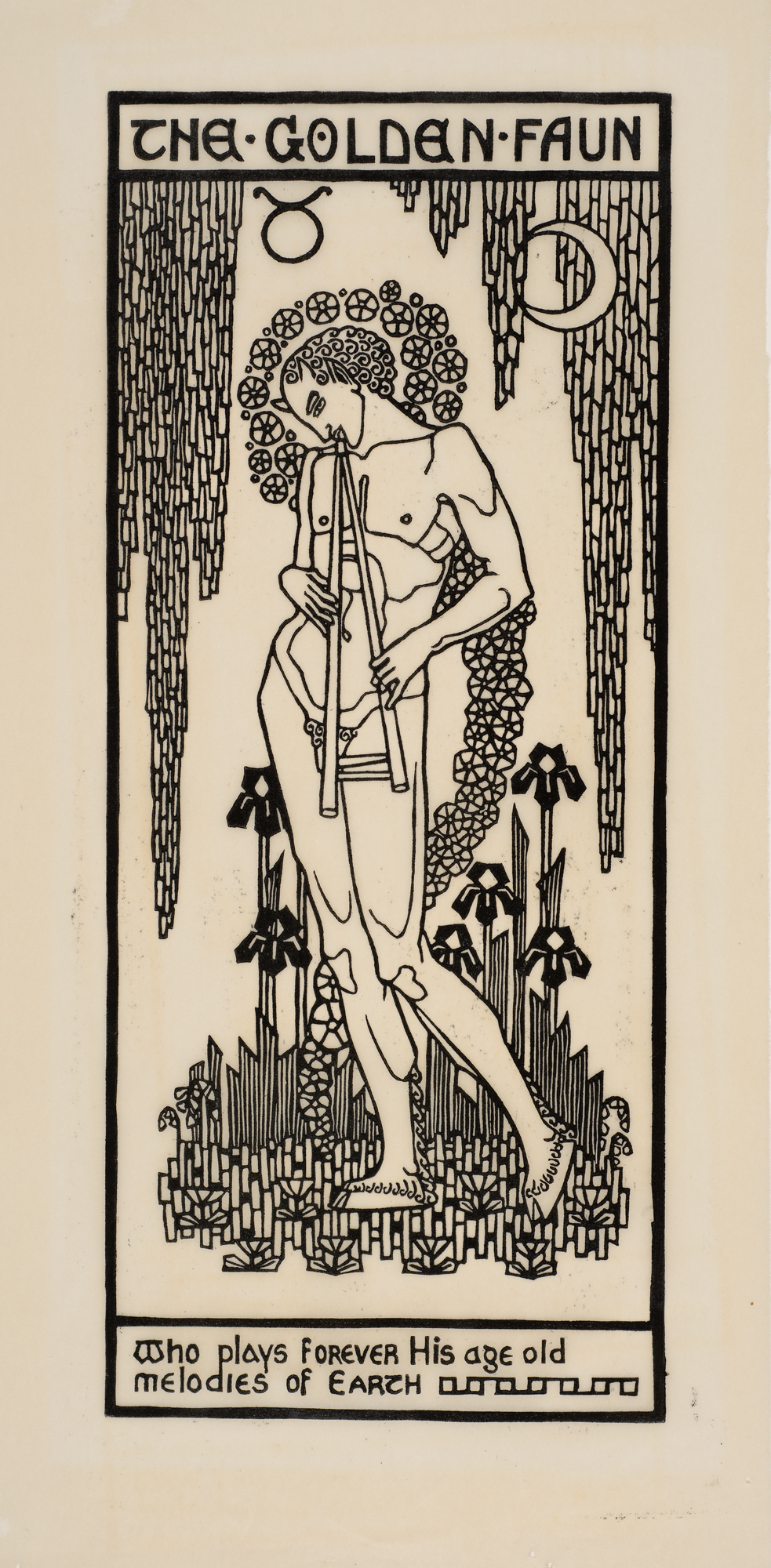Busowsky Cox on Waller
Here is a treat, a reflection on the work of a much-admired local artist Christian Waller (1894–1954), written by a much-respected local curator and writer, Emma Busowsky Cox.

Christian Waller: Magician of the Beautiful
The artist Christian Waller was born at home in Forest Street, Castlemaine, on 2 August 1894. The youngest of seven children to William Edward and Emily St Claire (née James) Yandell, she would later delight in the symbolic and spiritual associations with the number seven. Waller’s mystical interests, while stemming from ancient belief systems, were also contemporaneous with her environment: from the late nineteenth century through to the 1920s, both Castlemaine and Bendigo had prominent proponents of theosophy and modern Spiritualism, which flourished in the social and cultural melting pot that emerged on the goldfields.

Christian Waller’s artistic abilities were evident from an early age, and after attending Castlemaine Primary School (the ‘South School’ to us locals), and undertaking early studies at the Castlemaine School of Mines, the family moved to Bendigo where Waller received tuition from painter Hugh Fegan. Christian’s brother-in-law, Alexander Sclater, the husband of Christian’s eldest sister, Florence, was a dedicated champion of Waller’s work, and brokered her first public exhibition, at Bendigo Art Gallery, with a painting called A Petition. Christian was just fourteen years old. Waller later undertook formal studies at the National Gallery School in Melbourne under Frederick McCubbin and Bernard Hall. It was here that she met fellow artist Mervyn Napier Waller, whom she married in 1915 and would later settle with in Melbourne.
Like the Pre-Raphaelite artists before her, who drew inspiration from Arthurian legends of magic and chivalry, Christian Waller found rich subject matter for her works in Celtic folklore, as well as classical mythology and its allegories. Waller’s interest in printmaking flourished in the 1920s alongside notable successes in book illustration. Linocut printmaking was a medium that Christian honed alongside Napier Waller, who was a pioneer of the medium in Australia. The Sorceress of c. 1922, in the collection of the Art Gallery of Ballarat, is her earliest known linocut, and demonstrates her interest in depicting women of supernatural power.
In 1932 Christian Waller produced The Great Breath: A Book of Seven Designs, a work widely acknowledged as her finest printed work and a masterpiece of Australian Art Deco printmaking. The book features seven linocuts that portray the stages of spiritual evolution as described in modern theosophy, with particular reference to the 1888 text The Secret Doctrine by Helena Blavatsky, the Ukrainian-born occultist and philosopher who co-founded the Theosophical Society in New York City in 1875. Not a religion in itself, Blavatskian Theosophy promoted the pursuit of divine truth and the wisdom to be found in all the world's religions.

Right: Christian Waller, The Magician of the Beautiful from The Great Breath: A Book of Seven Designs, 1932, linoblock, Bendigo Art Gallery. RHS. Abbott Bequest Fund, 1990. Image: Ian Hill.
The Great Breath linocuts feature archetypal figures representing each of the seven stages of an evolutionary spiritual journey. The pagan god Pan appears in his corporeal glory in a garden of earthly delights as The Golden Faun, while the series concludes with The Magician of the Beautiful, an androgynous figure adorned in Celtic robes who ascends to heaven on a ladder of stars. Planetary symbols appear throughout the work alongside ancient Greek and Egyptian references, elements brought together by Waller in dazzling, modern designs.
Waller undertook every element of the book’s creation, and produced the work entirely by hand. The prints were bound together in an emerald green, cloth-covered folio, with the astrological symbol of the sun—a circle with a dot in the centre—hand-painted in gold on the cover. Waller intended to complete 150 copies, although only about 32 were made, a number difficult to determine precisely because Waller editioned each work according to the buyer’s numerology.

Right: Christian Waller, The Lords of the Flame from The Great Breath: A Book of Seven Designs 1932, linocut, Bendigo Art Gallery. RHS. Abbott Bequest Fund, 1990 Image: Ian Hill.
Castlemaine Art Museum holds several prints by Christian Waller in their collection, including The Golden Faun from The Great Breath series and two of the linoblocks themselves. These very special and fragile items reveal the marks of the artist’s hand in a way not evident in the prints, and make a fascinating accompaniment to the resulting prints.
Emma Busowsky Cox
May 2020